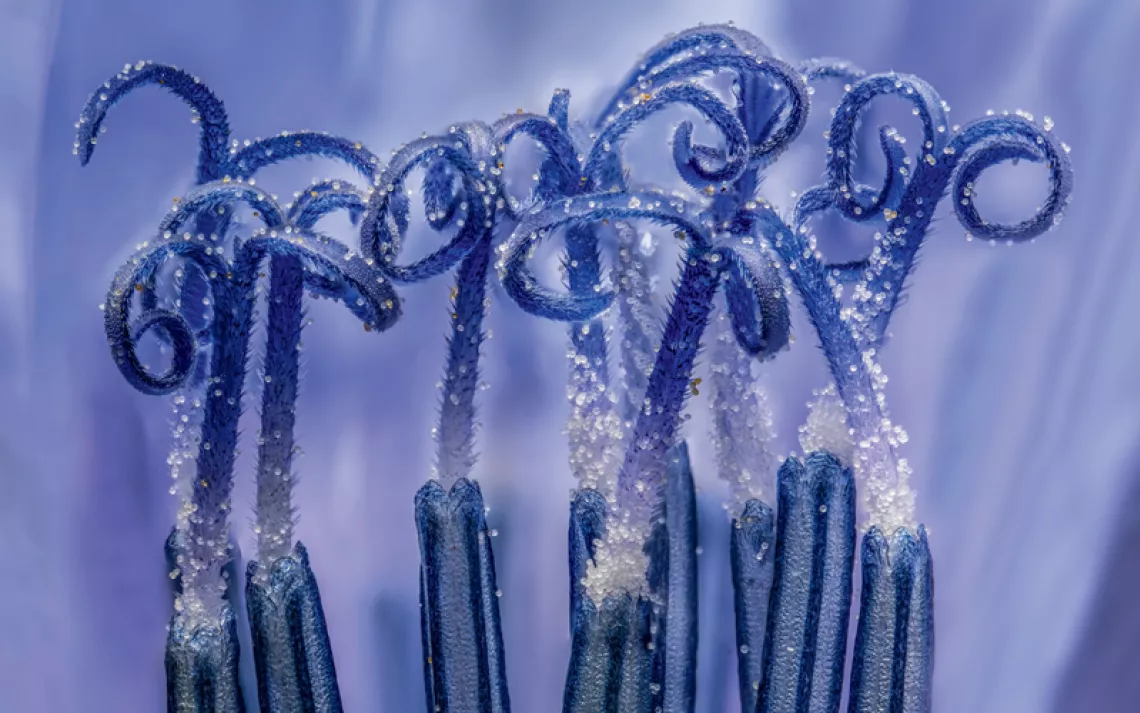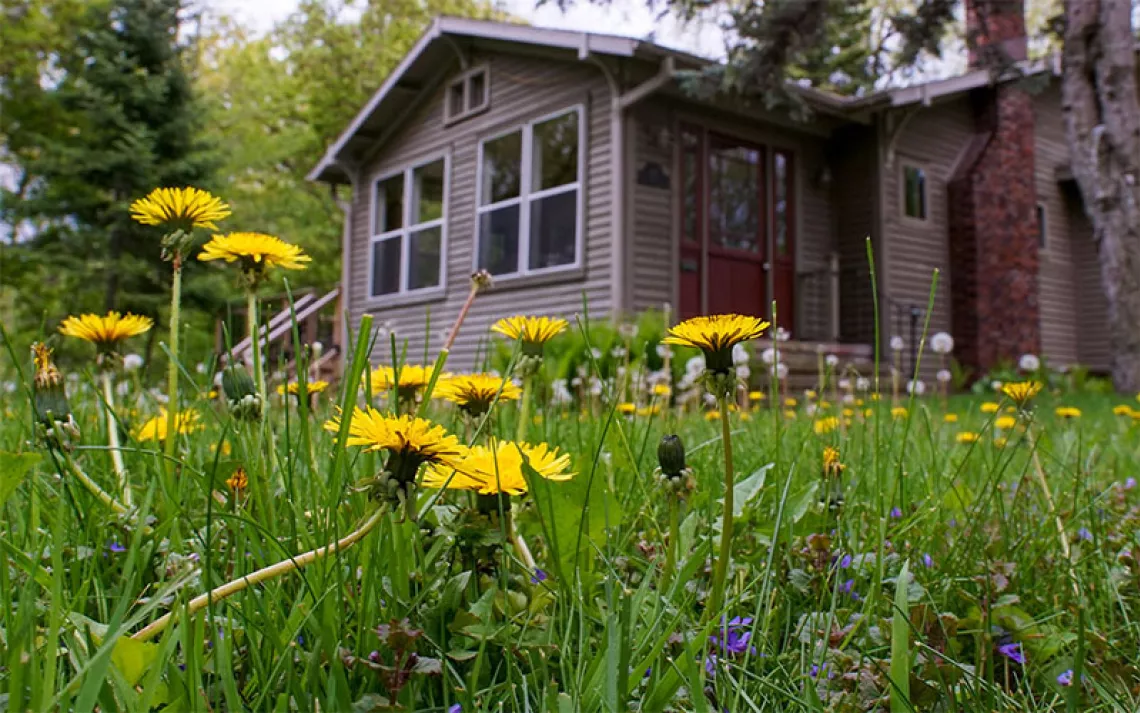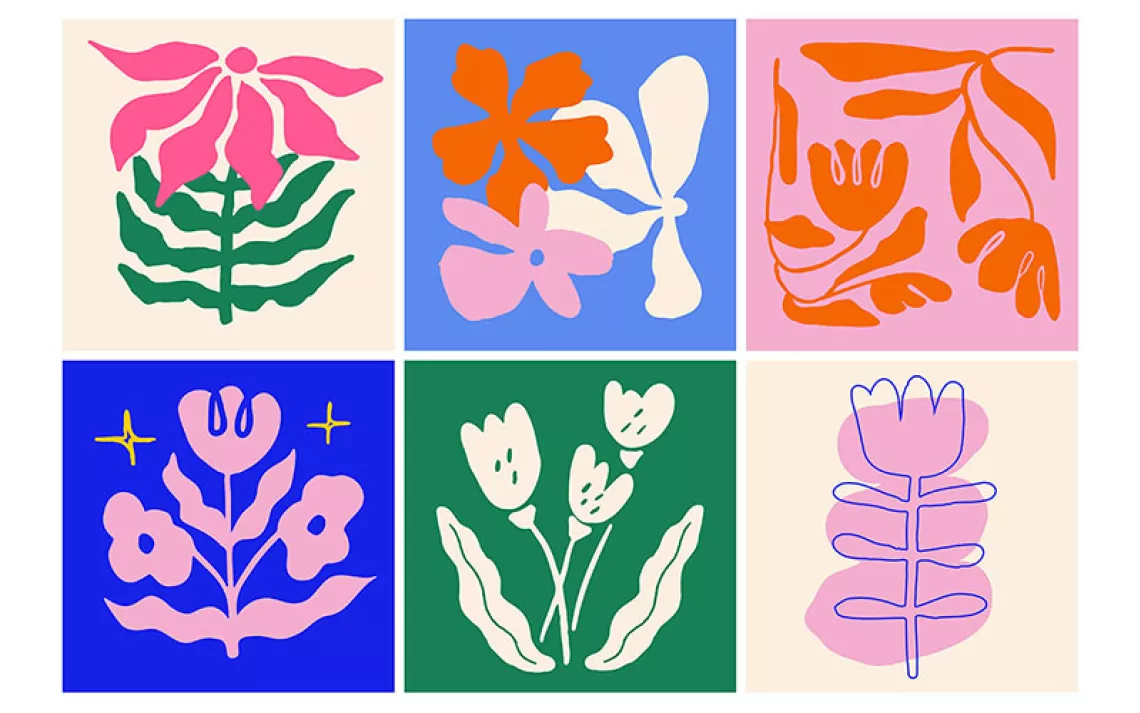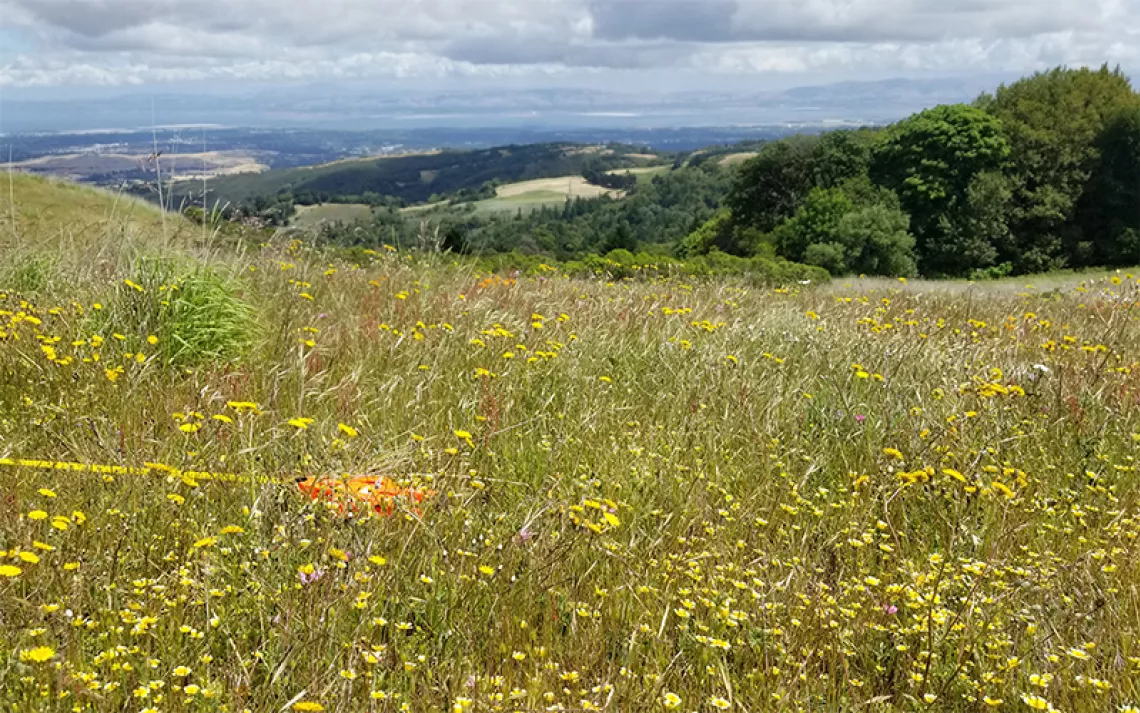Ode to Goldenrod
This oft-maligned plant is a natural marvel that feeds bees, beetles, and beyond. And no, it’s not making you sneeze.
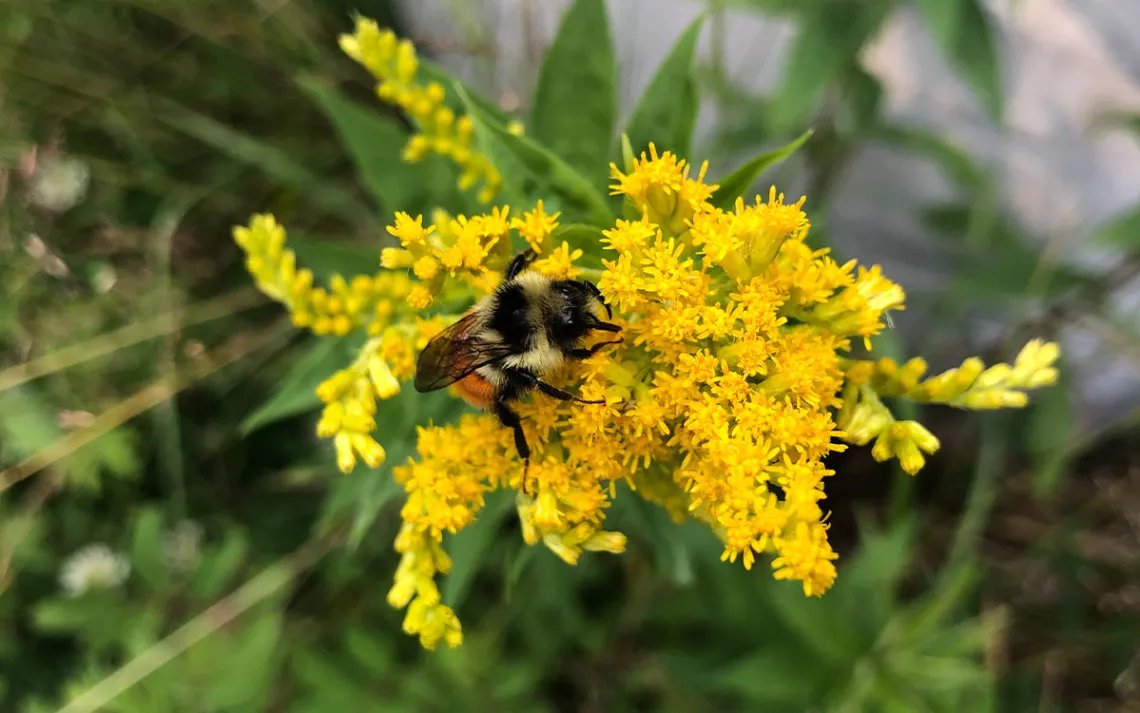
One summer a little over a decade ago, science illustrator Emily Damstra was sitting in a field of goldenrod plants, working on an assignment to draw the goldenrod gall fly. She had recently read ecologist Douglas Tallamy’s seminal book Bringing Nature Home, and was wondering how she could help spread his message about the importance of native plant ecosystems. There among the flowers, observing not just gall flies but scores of other insects as well, she had a brainwave: Through her art, she could help open others’ eyes to the beauty and essentiality of this common “weed.”
That moment was the birth of Damstra’s goldenrod project. Its goal was to research goldenrod and the organisms associated with it through the seasons, culminating in four life-size illustrations of the plant and the insects, spiders, and fungi that interact with it. “I really appreciate goldenrod,” she says. “I love seeing fields of it. It’s a window into nature that you can find on the side of the road.”
Imagine a prototypical daisy. Scratch that—make it a bouquet of daisies, taller and denser than you’ve ever seen before. Paint them all a vivid yellow, the color of the sun, then shrink them down until each flower is less than 1/8 inch wide. This is essentially a stem of goldenrod, so packed with tiny blossoms that many of us don’t perceive them as individual blooms at all. That is, unless you yourself are tiny—like the creatures that see goldenrod not as a nuisance or weed but as a glorious, bottomless cafeteria. “I call them a field of gold because they are treasures for the insects in our community,” says Joan Edwards, professor of biology at Williams College in Williamstown, Massachusetts. “They're really critical for preserving biodiversity.”
Goldenrod is not just one plant but a whole genus, Solidago. It encompasses some 139 species worldwide, 115 of which are native to the United States and Canada. These perennials are as diverse as the landscapes they grow on: You’ll find variants that are drought-tolerant or that love the rain, that thrive in seaside environments or prefer alpine landscapes. Solidago gillmanii, for instance, aka dune goldenrod, makes its home in sandy areas along the shores of lakes Huron and Michigan. Solidago bellidifolia, Cascade sticky goldenrod, is found in high elevations along the mountains of Washington, Oregon, and Vancouver Island. Solidago sempervirens, northern seaside goldenrod, grows on the opposite side of the continent, along the entire eastern coast—and even, nowadays, farther inland on verges grown saline due to road salt.
What all goldenrods have in common is their importance as a food source to a wide range of insects—bees and butterflies, flies and wasps, moths and beetles and more—plus non-insects like crab spiders, which camouflage themselves among the flowers to prey on other invertebrates. “You have this wonderful mutualism between insects and flowers,” says Edwards, a botanist currently focused on the conservation of flowers and their pollinators. “The flowers need the insects to carry out sexual reproduction and make new plants, and the insects need the plants for food.”
Two things make goldenrods particularly important in the ecosystem: when they flower, and the sheer quantity of pollen they produce. Considered a fall plant, goldenrods are in bloom from late summer through to the first frost—roughly August to October, depending on the local climate. This is a crucial time for insect species that need fuel for migration (think monarch butterflies) or to bulk up before hibernation, like bumblebees. “Queen bumblebees must achieve a certain weight if they're going to survive the winter,” Edwards says.
Not only do goldenrods flower throughout the autumn as various species bloom at different times, but they do so sequentially, too: within each goldenrod plant itself, flowers open up gradually rather than all at once. “There are hundreds of flowers” on just one stem, Edwards says. “So one stem is going to provide a resource to an insect over weeks. They bloom over such a long time period. It’s just amazing.”
Goldenrods are critical, but the trouble is, they’re also threatened. For one thing, they’ve got a bit of a PR problem. Search online for photos of ragweed and you’re likely to come up with shots of innocent goldenrod’s vivid yellow flowers—not allergy-causing ragweed at all, which has inconspicuous green blooms whose pollen is designed to be spread by wind, not by hungry insects. In fact, Edwards points out, if a flower is bright and attractive, it’s safe to assume its pollen is not allergenic. “Goldenrod is not the culprit” for fall allergies, she says.
There’s also the problem of habitat loss due to development, plus the fact that many see goldenrod as a weed and do their best to chop it down. Even if people do allow it to grow, Edwards says, they often mow it too often and too early, removing a crucial source of food at the moment wildlife need it most. If you must do a fall clean-up, she suggests waiting until after the first frost, when most insects are killed off and no longer need the pollen.
Another member of the goldenrod fan club is garden writer Lorraine Johnson, co-author of the book A Northern Gardener’s Guide to Native Plants and Pollinators. “It's so important to spread the love for goldenrod,” she says. “Every single garden should have at least some goldenrod for its ecological value.”
Johnson is a native plant advocate, but she also enjoys a well-thought-out garden. She’s quick to point out that with so many species of goldenrod, it’s not hard to find one that’s well suited to your conditions and needs and won’t take over your flower beds. “You can certainly choose a goldenrod that doesn't spread,” she says. To keep the plants from getting too lanky, she suggests trying the gardening maneuver known as the Chelsea chop, which entails cutting plant stems back by half in mid season, before blooms appear. “The goldenrod will still flower, but it will be bushier and lower.” As for mowing, Johnson notes that not only are the flowers a source of food, but birds and small mammals might dine on the seeds come cold weather—and the stalks help serve as a winter mulch, too. “In terms of maintenance, I suggest leaving those stalks over the winter and starting to see and think about their inherent beauty,” she says.
The hardy goldenrods that line the sides of highways and easily take root in untended urban land are often Solidago canadensis and altissima, Canada and late goldenrod, but there are countless other varieties to choose from for your own yard. To dig up the right goldenrod for your needs, Johnson suggests browsing plant lists or databases like those from the Xerces Society or the National Wildlife Federation, or looking for a local native plant group to find seeds or seedlings. “If someone has goldenrod, they're very often eager and willing to share,” she says.
In an age of climate change and biodiversity loss, something as simple as encouraging the growth of more plants like goldenrod can be a powerful act of stewardship and hope. Damstra, for her part, recently planted a wildflower meadow above her septic field. It includes several types of goldenrod, though she’s still waiting for them to bloom. “It'll be a couple more years before they come into their full glory,” she says.
In the meantime, she’ll catch sight of the golden flowers during her time in the field. Which, incidentally, is where you might find Edwards, tending her research plots and setting up cameras that take a photo every three seconds, cataloguing all the pollinators that visit a single flower during its time in the sun. “If you go out to a goldenrod plot on a sunny day in September, it is magical in terms of the insects you see there,” says Edwards. “We have to do what we can to preserve these really critical species.”
MORE:
Goldenrod Project: https://www.emilydamstra.com/projects/goldenrod/
 The Magazine of The Sierra Club
The Magazine of The Sierra Club
